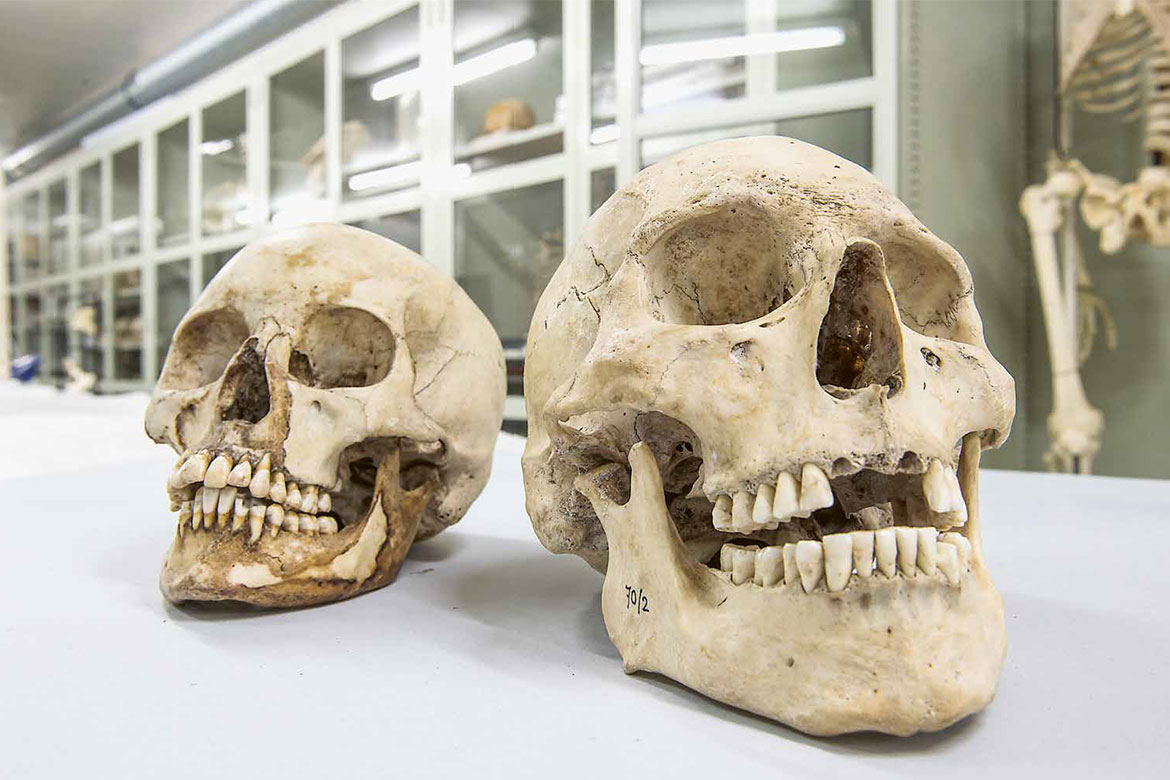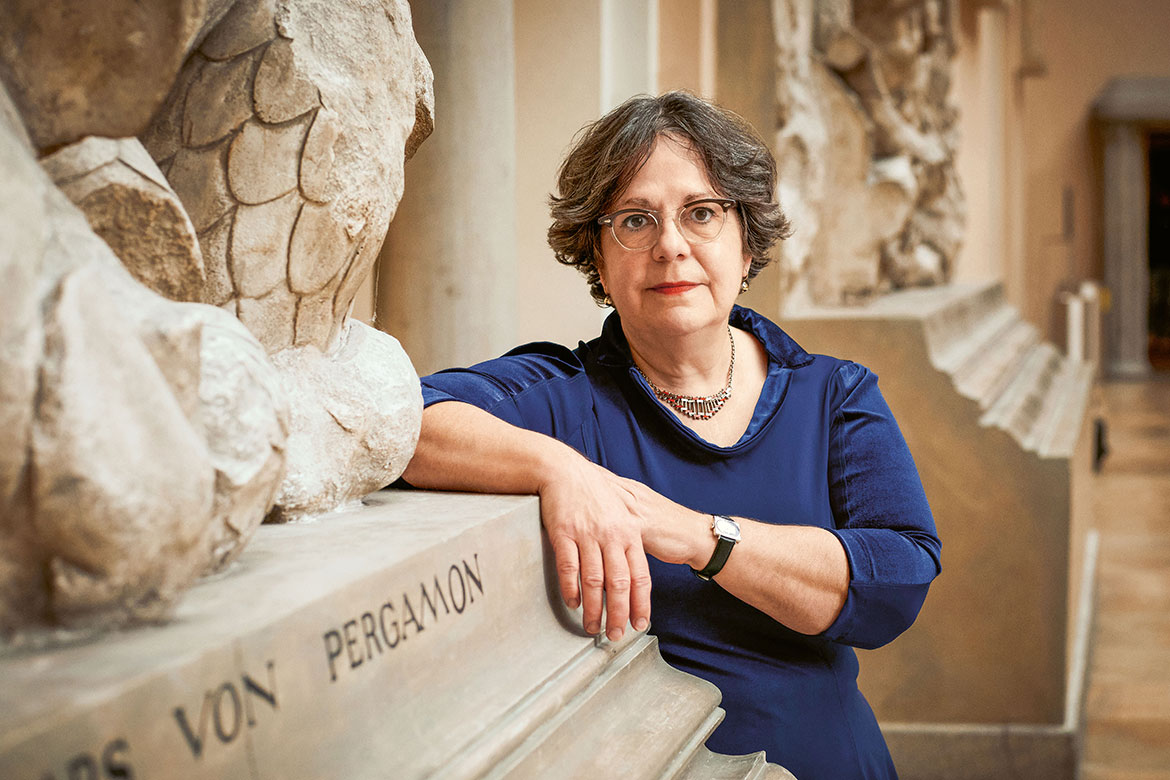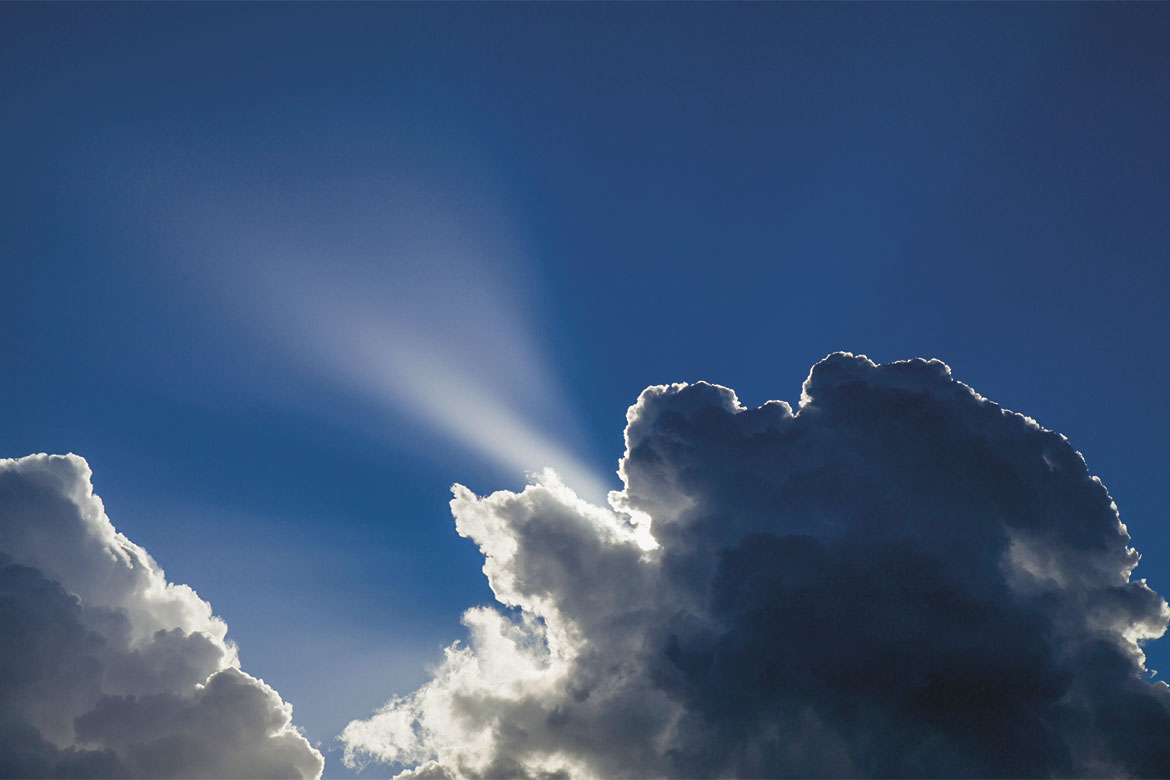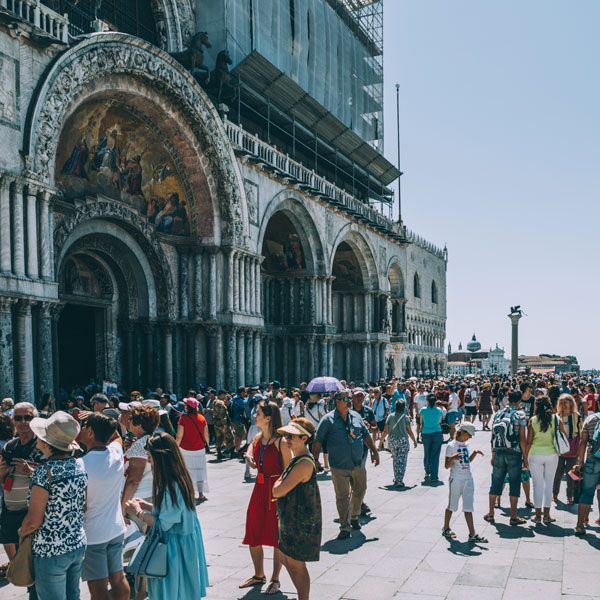The bone collectors
From where do all the bones come, and, importantly, should they be returned?

Skulls like these from the Basel Natural History Museum were intended to preserve our memory of indigenous populations and protect their heritage from colonisation. That’s how collectors saw it 100 years ago. Today, descendants are demanding the return of their remains. | Image: Valérie Chételat
In the files, he’s called a ‘collector’. However, he only carried his portable cooking utensils around with him, and that’s hardly the professional equipment of a man whose task is to skeletonise human corpses. Nevertheless, it’s thanks to his efforts that the Basel Society for the Natural Sciences was given “by far the most valuable addition” to its ethnological collection in the year 1914, as it wrote in its report for that year: “Two complete skeletons, one male and a young female, both Alacalufe from Tierra del Fuego: specifically, the west coast of the island of Santa Inéz”.
This island lies at the southern point of South America and today belongs to Chile. Our otherwise anonymous travelling ‘collector’ is said to have observed a funeral there, after which he promptly exhumed the bodies and then “boiled them down piece by piece in his travelling pan”, thus the annual report in Basel. What remained were bones and skulls. These lie today in the anthropological collection of the Basel Natural History Museum.
This is an exceptional case, as Pierre-Louis Blanchard has been able to determine. Blanchard studied biological anthropology and is currently working as a research assistant at the Rietberg Museum in Zurich. He is writing his doctoral thesis, entitled ‘Collecting humanity’, at the Department of Cultural and Science Studies at the University of Lucerne, and is investigating the history of early human remains both in the Basel collection and in the French National Museum of Natural History in Paris.
The controversy comes 100 years later
The period Blanchard is examining is 1905 to 1918, and the objects of his study are the scientific and historical context of anthropology, the institutions and people involved in forming these collections, and the origins of the objects in them. What is extraordinary about the Santa Inéz skeletons, he says, was not that the ‘collector’ dug them out of a grave; “exhumations were at the time a widespread method for acquiring human remains for anthropological study”. Even Fritz and Paul Sarasin, the founding fathers of the Basel collection, procured bones from graves in Sri Lanka and Sulawesi, in some cases without the knowledge of the indigenous inhabitants. What was exceptional was the point in time when these bodies were exhumed, for digging up fresh corpses that had not yet decayed was “very rare”.
A hundred years later, an ethical unease has surfaced. Human remains in museum collections have become a problematic matter, and demands for their restitution have resulted in controversy about the legacy of early anthropology. In 2011 this climaxed in a foreign-policy crisis between Germany and Namibia, when the presence of bones in German collections raised direct questions about the genocide once perpetrated against the Herero tribe in the former German colony.
Pierre-Louis Blanchard explains that these concerns have been compounded by shifting sensibilities with regard to our relationship to death and the dead. Back then, anthropological textbooks offered practical guidelines for exhuming bodies. Even handling human flesh was “not problematic” at the time. The Basel Society for the Natural Sciences also had no compunction about making public the circumstances in which they acquired their two Fueguians, as they happily published the details in their annual report. And no one back then questioned whether those circumstances were either legal or legitimate.
Preserving endangered tribes
At the same time, the collectors didn’t just see themselves as beholden to science alone, explains Blanchard, but also in a position of responsibility towards the indigenous peoples themselves. The collectors believed them to be threatened by both modernity and colonisation, and they wanted to secure these peoples a place in human history by collecting cultural and biological evidence of their existence. That is precisely why the bones of Santa Inéz were so “valuable” to the Basel Society; they were “the remains of a tribe that is dwindling without hope [of survival]”, as the Society wrote.
Only parts of these two collections truly raise ethical concerns, Blanchard insists. And where these exist, there is no guarantee that historical knowledge can help us find an answer to the questions we have today. Blanchard hopes that his research will at least make a contribution to the “fundamental knowledge” that is often lacking in the debate – namely about the origins of the bones and just how they entered these collections in the first place. “Many objects are badly documented”, he says, “and many museums have until now only engaged with the problems in a defensive manner”. The Natural History Museum of Basel is supporting Blanchard’s work. The head of its anthropological collection Gerhard Hotz explains that it is part of a long-term programme in the field of provenance research.
In Paris, Blanchard experienced just how topical his historical work can be. Since 1909, the French National Museum of Natural History in Paris has held the skull of a certain Mahmadou-Lamine, an indigenous leader in French Sudan and a victim of the colonial wars. Through his work, Blanchard became aware of a petition from Mali demanding the repatriation of the skull – and he was informed about it even before it had reached the museum authorities. The case is still pending.
Daniel Di Falco is a historian and a journalist at the Bund newspaper in Bern.




